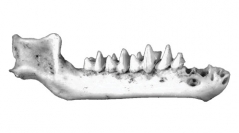

 Comptes Rendus Palevol
18 (4) - Pages 417-441
Comptes Rendus Palevol
18 (4) - Pages 417-441Bat remains are useful for palaeoecological reconstructions, they provide independent information on palaeoenvironment and are good indicators for hypogean microclimates. Nine taxa of Chiroptera divided into three families (Rhinolophidae, Vespertilionidae and Miniopteridae) and four genera (Rhinolophus, Myotis, Plecotus and Miniopterus) were discovered in three fossil assemblages from the Grotta dei Pipistrelli, in Sicily, a key region for an understanding of Quaternary climates and environments. Bat remains were deposited during three distinct timespans: one late Pleistocene, MIS 2, around the Last Glacial Maximum, and two Holocene, both referable to the Atlantic chronozone. The presence of yearlings, adult and old individuals suggests hibernating colonies, but the cave was also utilized as a nursery. The diversity of taxa indicates a composite landscape with prevailing vegetation cover and relatively warm climatic conditions. The percentage variations of the frequencies of the recognized taxa suggest a progressive increase of open spaces in the middle Holocene.
Chiroptera, Late Pleistocene, Holocene, Central Mediterranean Islands, taphonomy, palaeoenvironment